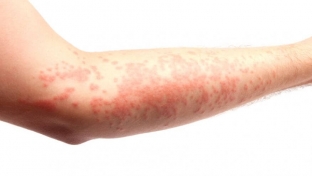In the previous article, we discussed the main aspects of treatment of eczema, as well as how to avoid side effects from the use of glucocorticosteroids. Modern glucocorticosteroids for external use are represented by a fairly wide range of dosage forms that allow a differentiated and narrowly focused approach to the choice of topical therapy. Along with the classic ointment and cream formulations, THCS-based eczema treatments are available in lotions, emulsions, and unique forms such as lipocream, which greatly expands the possibilities of therapeutic tactics.
How to choose the dosage form of the eczema treatment?
When choosing a dosage form of an eczema treatment, it is necessary to be guided, first of all, by the nature and localization of the pathological process. What forms of topical corticosteroids exist, read further on estet-portal.com. In acute and exudative forms of the inflammatory reaction, the effect on the skin should be as gentle as possible, bases with a high alcohol content or high occlusion should be avoided.
The cooling and drying effects necessary in these cases are achieved due to the non-aggressive action of external agents with a high water content (according to the postulates "wet — wet", "irritated do not irritate").
For this, lotions and lotions are used. The transition to more active forms with a moderate content of the lipid fraction (allows you to moisturize, improve the penetration of the active substance): pastes, emulsions, creams - is carried out as the skin condition improves.
The main dosage forms of eczema treatments:
- ointment;
- cream;
- lipocream;
- emulsion;
- solution;
- lotion;
- gadgets;
- paste.
Means for the treatment of eczema in the chronic course of the process
In the chronic course of the eczematous process with pronounced dryness, lichenification, and hyperkeratosis phenomena, it is recommended to use an ointment, including a fatty ointment, lipocream, which, due to the high content of lipids and due to the hydration of the stratum corneum, fix corticosteroids in the thickness of the skin. The release of the active substance from the ointment is usually slower than from the cream, which is extremely important given the clinical characteristics.
It should be noted that due to the low cosmetic acceptability of the ointment (feeling greasy, visibility on the skin after application, smell, soiling clothes, etc.), patients often avoid applying it or replace the eczema treatment with a cream, which undoubtedly affects on the effectiveness of treatment.
The choice of dosage form of a topical treatment for eczema will be largely determined by the localization of the eczematous process. When the face is affected, given the high sensitivity of the skin of this area to steroids, as well as skin folds, emulsion and cream are preferred.
In case of damage to the scalp or other areas of the skin with abundant hair, it is recommended to use a solution / lotion, cream. When the skin process is localized in the area of the trunk or extremities, preference should be given to cream, lipocream, ointment, depending not only on the nature of the course dermatosis, but also on climatic conditions.

What should be the skin care when treating eczema?
The next important point in the external therapy of patients with chronic eczema is the need to pay great attention to rational skin care with regular adequate use of skin moisturizers. This need is determined by the characteristics of the stratum corneum in such patients (impaired lipid structure, increased transepidermal water loss, a significant change in the secretion of the sebaceous glands, impaired keratinization).
Clinically, this is expressed in dryness and flaking of the skin, the appearance of micro- and macrocracks. At the same time, the protective barrier properties of the skin in relation to exogenous allergens, microorganisms (bacteria, fungi, viruses) are significantly reduced and sensitivity to irritants increases. High efficiency in the implementation of the protective, curative and cosmetic action of moisturizing agents in combination with topical steroid agents in the treatment of eczema has been repeatedly proven by clinical studies.
Among the wide range of modern drugs that help moisturize the skin of patients with chronic eczema, special importance is given to eczema treatments, which, in addition to the moisturizing effect, are able to have a pronounced softening effect due to their lipids, which are identical to skin lipids. These lipids penetrate into the stratum corneum of the epidermis and replace the lack of lipids that form the skin barrier. At the same time, an eczema treatment should not contain dyes, fragrances and other allergens that provoke an exacerbation of dermatosis.







Add a comment